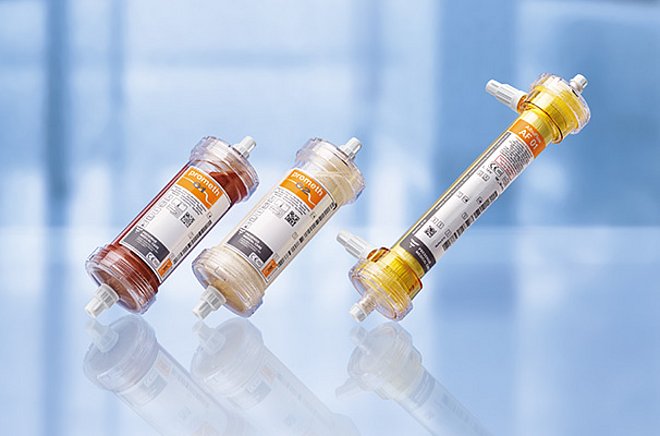Liver support therapy

Liver support therapy
Liver failure: a complex problem
The liver is an essential multifunctional organ. It synthesises essential proteins; is involved in fat, carbohydrate and protein metabolisms; regulates the storage of vitamins and glucose among others; and plays a key role in blood detoxification.
Severe liver failure can cause the patient’s blood to become overloaded with toxins. This can prevent the regeneration of liver cells as well as damage other organs. For many years, conventional extracorporeal blood purification methods have been used to help detoxify the blood in the event of liver failure. However, dialysis alone is usually insufficient, as it only removes water-soluble toxins and metabolic products up to a certain molecular size. Furthermore, liver failure also gives rise to numerous toxins that are bound to albumin (e.g., bilirubin, bile acids, long-chain fatty acids, phenols) and do not yield to hemodialysis. Adsorption can effectively remove such toxins from the blood.
The Prometheus® extracorporeal liver support system is designed to support the liver’s detoxification capacity and thus reduce the patient’s toxin load. It combines dialysis and adsorption procedures. A dialysis catheter continuously draws blood from the patient, while albumin-bound and water-soluble toxins are extracted in two consecutive steps:
- The AlbuFlow® albumin filter separates an albumin-rich plasma fraction from the patient’s blood. Only molecules up to the molecular weight of albumin or slightly higher are extracted. The toxin-carrying albumin passes the adsorbers prometh® 01 and prometh® 02 in sequence. Both adsorbers have a very high affinity for the toxins and remove them from the albumin. The purified, albumin-rich plasma fraction is then returned to the blood. This technique is called fractionated plasma separation and adsorption (FPSA).
- In the next step, water-soluble noxas, such as ammonia, urea and creatinine, are eliminated using high-flux hemodialysis. At the same time, the acid-base balance can be corrected by the adjustable acid and bicarbonate components of the dialysis fluid. The temperature of the blood returned, and thus the patient’s body temperature, is regulated through the modulation of the dialysis fluid temperature.

